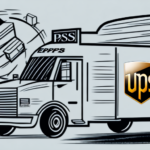Understanding the Costs of an Amazon Seller Account
Entering the world of Amazon selling can be a lucrative venture, but it's essential to comprehend the various costs involved in maintaining a seller account. Amazon has become a leading platform for businesses to reach millions of customers worldwide. However, navigating the array of fees and charges is crucial for ensuring profitability. This guide explores the different types of Amazon seller accounts, the associated costs, and strategies to manage expenses effectively.
Types of Amazon Seller Accounts
Individual vs. Professional Accounts
Amazon offers two primary types of seller accounts: Individual and Professional.
- Individual Account: Free to set up, suitable for sellers who plan to list fewer than 40 items per month. Amazon charges a flat fee of $0.99 per sale.
- Professional Account: Priced at $39.99 per month, this account is ideal for high-volume sellers. It allows unlimited product listings without the per-sale fee and grants access to Amazon's advanced selling tools.
Choosing the right account type depends on your sales volume and business needs. For detailed comparisons, refer to Amazon’s Seller Account Types.
Amazon Fees and Charges
Referral Fees
Amazon charges a referral fee for each item sold, which typically ranges from 6% to 45% depending on the product category. Most categories fall between 8% and 15% of the total sale price.
Fulfillment Fees
For sellers using Fulfillment by Amazon (FBA), additional fees apply for storage and order fulfillment. These fees vary based on the size and weight of the product. According to Amazon's FBA Revenue Calculator, fees can significantly impact your profit margins.
Variable Closing Fees
A flat fee ranging from $0.45 to $1.35 is charged per item, depending on the category. This fee is in addition to the referral fee.
Monthly Subscription Fees
Professional accounts incur a monthly fee of $39.99, which is automatically deducted from your Amazon account balance. This fee provides access to premium features like bulk listing and advanced reporting.
Shipping and Fulfillment Costs
Calculating Shipping Expenses
Sellers are responsible for shipping costs unless using FBA. Shipping expenses can vary based on the carrier, package size, and destination. It's advisable to negotiate rates with carriers or use Amazon's discounted shipping rates through Amazon Shipping.
Fulfillment by Amazon (FBA)
FBA allows sellers to store products in Amazon's warehouses, with Amazon handling shipping and customer service. While convenient, FBA fees include storage and fulfillment charges, which can add to overall costs.
International Selling Costs
Currency Conversion Fees
Selling internationally involves currency conversion fees, which are a percentage of the sale price. These fees can impact your overall revenue and should be factored into pricing strategies.
Customs, Taxes, and Duties
International sales may incur additional costs like customs duties and taxes, varying by country. It's essential to research the specific requirements of each target market using resources like the U.S. Customs and Border Protection.
Shipping to International Destinations
Shipping internationally can be more expensive and may require choosing reliable carriers that offer tracking and insurance. Utilizing FBA can simplify this process but comes with additional fees.
Hidden Costs of Selling on Amazon
Product Photography and Listings
High-quality product images and optimized listings are crucial for attracting customers. Investing in professional photography and copywriting services can enhance your listings but adds to your expenses.
Returns Handling
Amazon has a generous return policy, which means sellers may bear the cost of returned items. Efficient returns management systems can help mitigate these costs.
Long-Term Storage Fees
For products that don't sell quickly, Amazon charges long-term storage fees. Monitoring inventory levels and maintaining optimal stock can prevent accumulating these fees.
Strategies to Minimize Costs and Maximize Profit
Optimize Product Listings
Creating detailed and SEO-friendly product listings can increase visibility and sales, helping to offset fees. Use relevant keywords and high-quality images to attract more customers.
Utilize FBA Efficiently
While FBA fees apply, leveraging Amazon's logistics can lead to higher sales volumes and customer satisfaction, potentially increasing your overall profit margins.
Negotiate with Suppliers
Securing better prices from suppliers by negotiating bulk discounts or seeking alternative suppliers can reduce your cost of goods sold (COGS).
Automate and Streamline Operations
Automating tasks like inventory management and order processing can reduce labor costs. Tools like Shopify Inventory Management can help streamline your operations.
Managing Expenses and Financial Obligations
Regular Financial Audits
Conducting regular financial audits helps identify areas where you can cut costs and improve efficiency. Tools like QuickBooks or Xero can assist in managing your finances effectively.
Sales Tax Compliance
Understanding and complying with sales tax obligations is vital to avoid legal issues. Services like TaxJar simplify the process of calculating and remitting sales taxes.
Pricing Strategies
Implementing dynamic pricing strategies can help optimize your margins. Tools such as Repricing Central or Skubana adjust prices based on market trends and competitor pricing.
Comparing Amazon with Other Marketplaces
While Amazon is a dominant e-commerce platform, exploring other marketplaces like eBay, Walmart, and Etsy can diversify your sales channels. Each platform has its own fee structures and audience demographics. Assessing the costs and benefits of each can help determine the best fit for your business model.
For a comprehensive comparison, refer to sources like the Statista Report on E-commerce Marketplaces.
Conclusion
Understanding the multifaceted costs of selling on Amazon is crucial for building a profitable business. By recognizing and strategically managing fees, shipping costs, and other expenses, sellers can optimize their operations and maximize their profits. Regular financial assessments and leveraging Amazon’s tools and services can further enhance your success in the competitive e-commerce landscape.






















